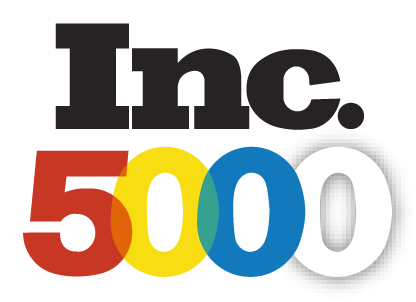Many people invest considerable time and energy into maintaining and improving their credit. And for good reason too. After all, it's their credit score that decides what kind of rates they'll pay on their mortgage, or how much interest their credit card company will charge if they carry a balance on a card.
However, what most people don't know is that they have not one, not two, but hundreds of credit scores! Moreover, these same credit scores that we try so hard to maintain tend to change constantly.
Probably the most common score is the FICO score, introduced by Fair Isaac Corporation more than 25 years ago. Another popular score, the VantageScore, was jointly developed by the three major credit bureaus, Equifax, Experian and TransUnion, and introduced in 2006. Both these scores use proprietary formulas to determine the probability of a consumer repaying a loan or credit card balance as agreed. For example, the FICO score is based on the following calculations:
35% Payment History: Whether or not the individual has bankruptcies, liens, charge-offs, settlements or late payments attributable to him.
30% Debt Burden: This includes evaluation of six different metrics in the debt category, such as the debt-to-limit ratio, number of accounts with balances, amount owed across different types of accounts, and the amount paid down on instalment loans.
15% Length of Credit History: The two metrics in this segment are the average age of the accounts and the age of the oldest account.
10% Types of Credit Used: Whether or not the consumer has a history of managing different types of credit, such as installment, revolving, consumer finance and mortgage.
10% Recent Searches for Credit: This category considers hard inquiries, which occur when consumers apply for a credit card or loan.
Other than FICO and VantageScore, other scores are also available including:
- CE Score by CE Analytics
- Plus Score and Experian Scorex PLUS score by Experian
- Equifax Credit Score and Credit Optics Score by ID Analytics Inc.
- Additionally, the companies Innovis, ChexSystems and PRBC produce credit scores that are used by some lenders.
All credit scoring formulas are revised from time to time, and creditors may adopt the newer version after a lag. For example, although FICO 9 is available, most lenders still prefer to use the older version, FICO 8. So an individual's credit score not only depends on the score type and the data that is used, but also on the version of the algorithm that is employed!
VantageScore is usually distributed for free as an educational tool on personal finance websites, while FICO is usually used by lenders. Some of the differences between FICO 8 (the most widely used version) and VantageScore 3.0 (the current version) are as follows.
- Paid off collections are ignored by VantageScore for scoring purposes, although they are considered by FICO 8.
- Alternative data, such as rent and utility payments, are used by VantageScore. FICO, on the other hand, is pilot-testing an alternative score called the FICO XD that includes the same.
- The minimum time period for which a person needs to have credit in order to qualify for a score from FICO is six months; VantageScore can provide a score after just 30 days.
- As to how recently a credit account needs to be used, FICO requires the consumer to use at least one account in the last six months. However, VantageScore can use data from as far as 24 months back in order to generate a score.
When a consumer applies for credit, it's the lender who decides which score should be used to assess a borrower’s ability to repay the loan. For smaller loans, the creditor may check only one credit bureau's report or score. But for larger loans, such as a mortgage on a building, the lender may use more than one formula and multiple sources of data. Sometimes creditors customize scores to better suit their purpose. For example, auto loan scores weigh car payments that are made on time more heavily than other scores.
The FICO model itself now applies to many types of credit scores. There is the Generic FICO Score, FICO Mortgage Score, FICO Auto Score, FICO Bankcard Score, FICO Instalment Loan Score and the FICO Personal Finance Score. That means that every individual has at least six different FICO scores!
Thus, an average consumer's credit score can have many variations. Nevertheless, they are all dependent on the borrower's credit history. In order to improve credit scores, all an individual needs to do is improve his or her credit record.
While folks can get their credit report for free, credit scores usually cannot be obtained without paying a fee, unless a consumer has been denied credit or insurance because of it. However, certain credit cards make FICO scores available to customers, and many websites provide offers where you can get a VantageScore for free. This blog post talks about the best tools to monitor your credit.
There may be multiple variations of your credit score, but when it comes to getting a business loan, there is only one organization that you need to approach! Our team at Fund&Grow provides opportunities for individuals, LLC's and corporations to achieve their financing needs using special low interest credit offers. Our veteran finance industry experts provide top-notch financing programs combined with great customer service and support. So call us at (800) 996-0270 to learn more about how we can help you achieve your financial dreams!
Popular Posts
Instantly Pre-Qualify
Want Actionable Information, Tools and Resources To Quickly Acquire Business Capital, Credit and Funding?
I take tremendous pride in building positive and lasting relationships in my businesses and personal life. Every member of my team is committed to helping our clients get the maximum amount of funding possible and achieve their highest growth potential.

have a question?
Our business experts are available to answer questions Monday - Friday from 9:00 a.m. - 6:00 p.m. EST
Call Us:
(800) 996-0270
Email Us:
service@fundandgrow.com
Watch our business credit webinar:
Obtain $250,000 Business Credit
Let's Stay Connected on Social Media!

For over 15 years, Fund&Grow has helped 30,000+ business owners get access to over 1.6 Billion dollars of business funding. We're on a mission to empower the small business owner by helping them tap into the smartest form of funding: Unsecured Business Credit – so that they can achieve their goals and dreams.
Contact
Information
"Fund&Grow was created to empower small business owners, but more importantly, to support entreprenuers in achieving their business and personal goals while they lead the way towards innovation." - Ari Page CEO of Fund&Grow
Ari Page and the Fund&Grow team help business owners obtain access to credit despite the ambiguous lending climate. Many people feel ripped off and scammed by the bank bailouts and wonder why they can't use the system to their advantage the way the big banks did. If you have good credit, the Fund&Grow program will get you the funds you need to grow your business.
Find 4,000+ 4.9-star average customer testimonials on the following platforms: SoTellUs, Trustpilot, Google, BBB, among others.
All credit is subject to lender approval based upon credit criteria. Up to $250,000 in business credit is for highly qualified clients over the term of the membership with multiple credit card batches and/or credit lines. Introductory rates of 0% apply to purchases and/or balance transfers after which it reverts to an interest rate, which varies by lender as disclosed in the lending agreement. Fund&Grow is not a lender.
© 2025 Fund&Grow. All Rights Reserved.

 Share
Share








